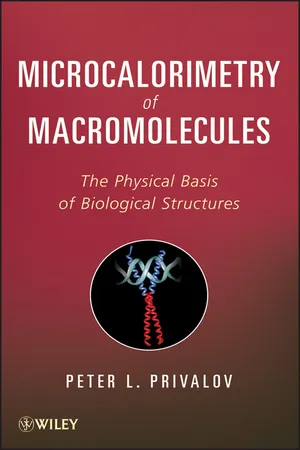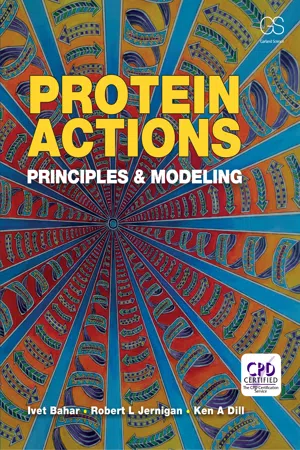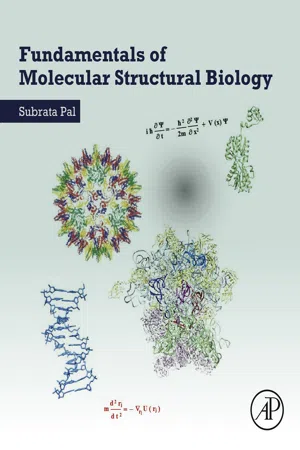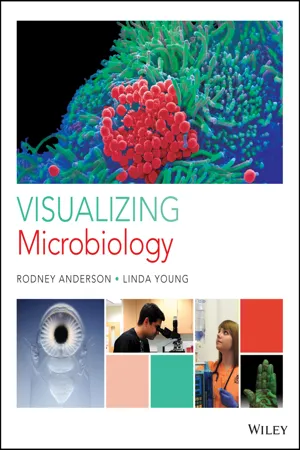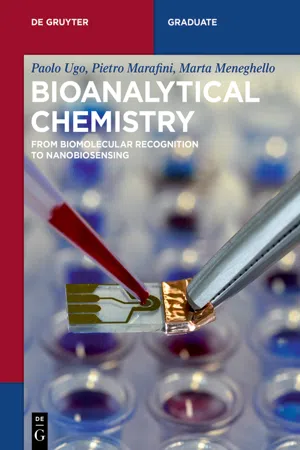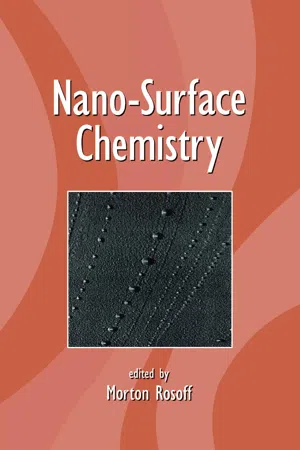Biological Sciences
Macromolecules
Macromolecules are large, complex molecules essential for life, including carbohydrates, proteins, nucleic acids, and lipids. They are composed of smaller subunits and play crucial roles in the structure, function, and regulation of cells. Macromolecules are involved in processes such as energy storage, genetic information transfer, and cell signaling.
Written by Perlego with AI-assistance
Related key terms
10 Key excerpts on "Macromolecules"
- eBook - ePub
- Alan Cooper(Author)
- 2015(Publication Date)
- Royal Society of Chemistry(Publisher)
1
Biological Molecules
You don’t need to know any biology in order to study biological molecules, but it does help to have some background.Aims This chapter will briefly review the bare bones of biological (macro)molecules. By the end, and together with your previous knowledge and some background reading, you should be able to:- Describe the basic chemical structures of polypeptides, polynucleotides, fats, lipids, and carbohydrates
- Explain what is meant by the primary, secondary, tertiary and quaternary structure of proteins
- Describe the behaviour of fats, lipids and detergents in water
- Explain the anomalous properties of liquid water
- Recall the fundamentals of acid–base equilibrium
1.1 Introduction
This book is mainly about the experimental methods used to understand the physical properties and function of the molecules that make up living systems.These molecules—proteins, polynucleotides, polysaccharides, lipids—are not necessarily any different from molecules we study in other branches of chemistry. But there are some additional factors, arising from their biological origin, which we need to be aware of.- Biological Macromolecules are large molecules formed from many smaller units and are (usually) polymers of precise length and specific sequence.
- They (usually) fold or associate into specific conformational assemblies stabilized by non-covalent interactions.
- This (usually) happens in water.
- The molecules are the (usually) successful outcomes of biological evolution.
It is this last point that makes things so exciting for the biophysical chemist. The molecules we see today are the results of countless random (more or less) experiments over millions of years during which living systems have evolved to take advantage of subtle principles of physical chemistry that we barely yet understand. By studying such systems we can learn much about physical chemistry in general, with potential for applications in other areas. - Jason Birkett, John Lester(Authors)
- 2018(Publication Date)
- CRC Press(Publisher)
Chapter 8Biological molecules
8.1 Introduction
The existence of a cell depends upon its structural components, which maintain its physical integrity, and its functional components, which control its growth, metabolism and reproduction and which regulate these processes. In a great many instances structural and functional roles are closely integrated, even in the simplest cell.The highly ordered, but extremely complex nature of living cells is due to the great variety of organic compounds which may be formed, inherent in the chemical properties of carbon itself. Its ability to form four covalent bonds with other atoms and itself, generating long carbon chains, gives rise to an almost limitless number of possible compounds, including Macromolecules with molecular weights as high as 100 million. In all cases, these Macromolecules are formed from the linkage, in a series, of smaller molecules, termed monomers, and hence are called polymers. Even if constructed from a pool containing a relatively small number of different types of monomer molecules the number of different possible sequences of these subunits is theoretically very large indeed. If only a small fraction of all of the possible combinations of monomers were to be associated with a distinct structural or functional characteristic of the polymer molecule, this number would be more than sufficient to account for the enormous diversity and complexity of living organisms. There are, however, a large number of characteristics common to all cells, irrespective of their origins, which is indicative of a moderately consistent selection of only a few of the possible combinations in each case, suggesting that cellular chemistry is organized and regulated in a highly precise manner.There is, in addition to the Macromolecules, a great variety of other organic compounds which are important by virtue of their role as nutrients and intermediary metabolites. However, this chapter focuses only on those which are unique and integral components of cells—the Macromolecules.- eBook - ePub
Cancer
Basic Science and Clinical Aspects
- Craig A. Almeida, Sheila A. Barry(Authors)
- 2011(Publication Date)
- Wiley-Blackwell(Publisher)
Figure 2.1f ). Therefore, the proper functioning of the body is dependent upon the ability of a virtually uncountable number of cells possessing a variety of shapes and functions to work as a cohesive unit. Perhaps even more remarkable is how a single “rogue” cell arises, divides uncontrollably, wreaks havoc on healthy cells and tissues, and brings about serious harm or even death.FOUR TYPES OF MACROMOLECULAR POLYMERSName two additional organ systems in the human body and which organs comprise them.What are the hierarchal levels of structure present in a human?Many of the molecules that carry out the processes vital to life are in the form of macromolecular polymers – large molecules formed from the linking of smaller molecules called monomers. The four major Macromolecules in living systems are nucleic acids, proteins, carbohydrates, and lipids (fats). The roles these molecules play in the functioning of our cells, tissues, organs, and organ systems will be discussed in the following sections of this chapter and periodically throughout subsequent chapters. An understanding of the structure-function relationship of each macromolecule and the relationships that exist between them is key to understanding how an organism as complex as a human functions. In a diseased state, it is the functioning of these Macromolecules that is negatively affected.Nucleic acid molecules are information moleculesGenetic information is the resource material a cell uses to perform all of its functions. Nucleic acids are the Macromolecules that store and transmit genetic information. There are two types of nucleic acids in cells: DNA (deoxyribonucleic acid) and RNA (ribonucleic acid). Both of these molecules are built from monomer molecules called nucleotides. Nucleotides have three components: a phosphate group, a sugar, and a nitrogenous base (Figure 2.4 ).The terms DNA and RNA are based in part on the type of sugar each molecule possesses. DNA molecules are built with nucleotides that contain the sugar deoxyribose whereas RNA nucleotides possess the sugar ribose (Figure 2.4 ). Single capital letters are used to represent individual nucleotides and depend on which of the five different nitrogenous bases the nucleotide possesses: adenine (A), thymine (T), cytosine (C), guanine (G), and uracil (U) (Figure 2.4 - eBook - ePub
Biological Inorganic Chemistry
An Introduction
- Robert R. Crichton(Author)
- 2007(Publication Date)
- Elsevier Science(Publisher)
4Structural and Molecular Biology for Chemists
Publisher Summary
This chapter introduces the concept of structural and molecular biology with a brief survey of the building blocks used to build up the macromolecular structures, which constitute the principal elements of biological systems, and the hierarchy of structural organization in proteins, nucleic acids, carbohydrates and the lipid constituents of biological membranes. It also describes how genetic information encoded in DNA is transcribed into RNA and then into proteins. The amino acids present in the body can be divided notionally into those which have non-polar, uncharged and generally hydrophobic side chains; those which have polar, but uncharged side chains and those which have polar, charged side chains. Nucleic acids are made up of three components—nitrogen-rich bases of the pyrimidine and purine families, the DNA bases adenine and guanine, and thymine and cytosine, which are linked in an N -glycosidic bond to a sugar and phosphate groups, which link the sugar residues. The combination of a nucleobase with a sugar generates a nucleoside; hence adenine becomes deoxyadenosine when bound to deoxyribose; while a nucleobase plus a sugar plus one or more phosphate residues constitute a nucleotide. Carbohydrates have the empirical formula Cn H2nOn , make up an important class of biomolecules. Lipids are fat-soluble molecules, unlike the other biological Macromolecules that are all water soluble. They are not - eBook - ePub
Microcalorimetry of Macromolecules
The Physical Basis of Biological Structures
- Peter L. Privalov(Author)
- 2012(Publication Date)
- Wiley(Publisher)
4 Macromolecules4.1. EVOLUTION OF THE CONCEPT
The term Macromolecules usually includes two very different classes of high-molecular-weight organic compounds: the proteins and the nucleic acids, which are found in all living organisms and only in these organisms. Therefore, these giant molecules evidently represent the most essential components of living systems.The term protein was coined by Garret Jan Mulder in 1838: “Protein appears to be a principal substance of animal nutrition which the plants prepare for the herbivores, and which these then supply to the carnivores.” According to Webster’s New Dictionary , “Protein—any of the class of complex nitrogenous substances occurring in all animals and vegetables and essential to diet of animals.” Understanding that proteins are not just food for carnivores came rather late.For a long time proteins were considered as colloidal particles, that is, aggregates of low-molecular-weight organic compounds. By the middle of the nineteenth century it became clear that proteins consisted of smaller components that had certain chemical characteristics in common: they always contained an amino (NH) group and an acidic carboxylic (COOH) group. The term amino acid was used for compounds containing these two groups. Several hundreds of various amino acids were synthesized by chemists; however, living organisms use only 20 quite definite amino acids. It appeared that the difference in properties between proteins results from difference in relative contents of their amino acid constituents. It remained unclear, however, how these small components are integrated.Substantial progress was made in solving these problems with the invention of the ultracentrifuge by Theodor Svedberg in 1924. Ultracentrifugation experiments showed that the mass of each given type of protein is quite definite and unique. Proteins appeared to be monodisperse heteropolymers each consisting of quite a definite number of certain amino acids. On the other hand, it was found that some of the proteins were forming crystals . It was also known that proteins change drastically upon heating: at high temperatures they loose their enzymatic activity and precipitate; that is, they denature . It was also found that the heat-denatured proteins do not form crystals. It appeared that the natural, enzymatically active protein (i.e., the native protein) should have some structure, which is disrupted upon heating, that is, upon its denaturation. With the rapid success of crystallography in Cambridge under Lawrence Bragg in the 1930s this led to an idea of determining protein structure crystallographically. Realization of this idea took two decades. In 1958 the first protein structure appeared, done by John Kendrew - eBook - ePub
Protein Actions
Principles and Modeling
- Ken Dill, Robert L. Jernigan, Ivet Bahar(Authors)
- 2017(Publication Date)
- Garland Science(Publisher)
CHAPTER1
Proteins Are Polymers that Fold into Specific Structures
PROTEINS ARE THE MACHINES THAT PERFORM CELLULAR FUNCTIONS
Proteins are biology’s workhorse molecules. In a human cell, there are about 18,000 different types of protein molecules. Think of cells as teeming factories of molecules of various types. Proteins perform many functions—as the factory workers, as the machines that produce the factory’s output, and as the factory’s structural framework. In contrast, nucleic acids (DNA and RNA) are the molecules that encode information, providing the instructions for making the factory products. Sugars and carbohydrates are energy sources used to run the factory. The factory walls (cell membranes) are made up primarily of lipids and polysaccharides. E. coli is a bacterium having about 4300 protein-coding genes and a total of aboutindividual protein molecules [1 ]. Figure 1.1 shows the size of a typical protein molecule compared with atoms and cells.3 ×10 6Proteins are targets for drug discovery and disease intervention. Discovering new drugs typically involves identifying proteins involved in a disease, and then designing drug molecules or proteins that activate or inhibit those proteins. Some drug molecules are small molecules. Increasingly, proteins are being developed within biotechnology companies, as therapeutic agents to act upon other proteins. In addition, proteins promise to play important roles in nanotechnology, as miniature engines, pumps, motors, optical transducers, and sensors, in photosynthesis and other applications. Proteins are nature’s miniature machines.Figure 1.1 In linear dimensions, proteins are a hundredfold larger than atoms and a thousandth the size of a human cell. Note the sizes of images follow the lower size scale and are not drawn strictly to size.To understand the properties of proteins, you first need to understand their structures. Throughout this book, we use different types of images of protein structures ( Figure 1.2 ). Sometimes you want to see chemical and atomic details. In such cases, space-filling models of the atoms or stick representations of the bonds are useful (see Figure 1.2A and B ). Other times, you want to see the overall shape of the protein and not the details. In those cases, you may prefer cartoons, or surface representations (see Figure 1.2C and D - eBook - ePub
- Subrata Pal(Author)
- 2019(Publication Date)
- Academic Press(Publisher)
Chapter 5 BioMacromolecules Abstract All cells comprise proteins, nucleic acids (DNA and RNA), glycans (carbohydrates), and lipid assemblies. Nucleic acids are made from four different kinds of nucleotides, each of which consists of three components: a pentose sugar, a nitrogenous base, and a phosphate group. DNA is mostly double-stranded—two polynucleotide chains are intertwined around each other in the form of a double helix. Phosphodiester links consecutive sugars in each strand, while hydrogen bonds between complementary bases hold the two strands together. The geometry of base pairs creates in the double helix the major and minor grooves which expose the chemical groups required for interaction with other molecules, particularly proteins. Amino acids are the fundamental building blocks of proteins. A sequence of amino acids, joined together by peptide bonds, forms a polypeptide chain. Based on the nature of amino acid sequences (primary structure), and assisted by water molecules, polypeptides fold into higher-level structures—secondary, supersecondary, tertiary, and quaternary. The structure of a protein is both flexible and dynamic. Keywords Nucleotide; Phosphodiester bond; DNA structure; Major and minor grooves; Amino acid; Peptide bond; Protein structure; Motif; Domain; Fold It has been mentioned earlier (Chapter 1) that all living organisms, plant or animal, are comprised of cells. Conspicuous diversity prevailing in their size, shape, appearance, and many other characteristics notwithstanding, all cells comprise proteins, nucleic acids (DNA and RNA), glycans (carbohydrates), and lipid assemblies. Of these, proteins, nucleic acids, and glycans are considered to be Macromolecules—polymers built through the formation of covalent bonds between smaller molecules (the building blocks). Here, in this chapter, we shall mainly focus on the structures of nucleic acids and proteins - eBook - ePub
- Rodney P. Anderson, Linda Young(Authors)
- 2016(Publication Date)
- Wiley(Publisher)
p. 28 □ p. 35 □ p. 40 □ p. 43 □ p. 49 □□ Read the text and study all figures and visuals. Answer any questions.Analyze key features
□ What a Microbiologist Sees, p. 34□ Process Diagram, p. 36 □ p. 38 □□ Clinical Application, p. 42□ Case Study, p. 44□ The Microbiologist’s Toolbox, p. 48□ Microbiology InSight, p. 52□ Stop: Answer the Concept Checks before you go on.p. 35 □ p. 39 □ p. 42 □ p. 49 □ p. 53 □End of chapter
□ Review the Summary and Key Terms.□ Answer the Critical and Creative Thinking Questions.□ Answer What’s happening in this picture?□ Complete the Self-Test and check your answers.2.1 Proteins
LEARNING OBJECTIVES
1.Describethe four levels of protein structure, indicating how each influences the overall configuration of the macromolecule.2.Discussprotein diversity, relating maintenance of structure to general protein function.P roteins, carbohydrates, lipids, and nucleic acids are the four classes of Macromolecules that compose all organisms (Figure 2.1 ). Each class is characterized by specific monomers, or building blocks, that are joined together bypolymer-specific covalent bonds. Interactions between the resulting Macromolecules are the basis of life.polymerA large molecule produced by the joining of many similar or identical monomers.The complex, varied structures of the Macromolecules composing all organisms are built by joining together smaller chemical building blocks, or monomers.The principle macromolecule classes • Figure 2.1a. ProteinsProteins are composed of amino acid monomers that may form helices that pack together, creating diverse globular structures responsible for many cellular functions.b. CarbohydratesSimple sugars, or monosaccharides, such as the glucose units shown here, are the monomers used to build carbohydrates.c. LipidsThis fat is made by attaching three large fatty acid monomers to a three-carbon alcohol, glycerol.d. Nucleic acids - eBook - ePub
Bioanalytical Chemistry
From Biomolecular Recognition to Nanobiosensing
- Paolo Ugo, Pietro Marafini, Marta Meneghello(Authors)
- 2021(Publication Date)
- De Gruyter(Publisher)
Biophysical Studies of Oligonucleotides Containing Duplex Stabilising Modifications, DPhil Thesis, University of Oxford, 2017. Reproduced with permission from the author).1.2 Introduction to proteins
Proteins are large biomolecules, or Macromolecules, consisting of one or more long chains of amino acid residues. Like other biological Macromolecules, such as polysaccharides and nucleic acids, proteins are essential parts of all living organisms and participate in virtually every process within cells. They can be classified according to their biological function as follows:-
enzymes, which catalyse almost all biochemical reactions within cells and are vital to metabolism;
-
transport proteins, which serve the function of moving other species from one location to another within an organism, for example, haemoglobin that transports oxygen from the lungs to other organs and tissues;
-
structural proteins, which confer stiffness and rigidity to biological components. Some examples are keratin (the main component of hair, nails and some animal shells), collagen and elastin (present in connective tissues such as bones, tendons or cartilages), and the proteins of the cytoskeleton, which form a system of scaffolding that maintains cell shape;
-
antibodies, defence proteins used by the immune system to recognise and neutralise pathogens such as viruses, pathogenic bacteria and substances extraneous to the organism.
There are also many other proteins with different functions, for example, cell signalling and signal transduction, and DNA replication. However, the most interesting proteins in bioanalytical chemistry are enzymes and antibodies. So, in this chapter, we mainly focus on these two types of Macromolecules.From a chemical point of view, proteins are polymers of amino acids bound together by peptide bonds. Therefore, we begin our description of proteins with an overview on such fundamental molecules. - eBook - ePub
- Morton Rosoff(Author)
- 2001(Publication Date)
- CRC Press(Publisher)
12Supramolecular Assemblies Made of Biological Macromolecules
NIR DOTAN Glycominds Ltd., Maccabim, IsraelNOA COHEN, ORI KALID, and AMIHAY FREEMAN Tel Aviv University, Tel Aviv, IsraelI. INTRODUCTION
The potential inherent in the design and fabrication of complex nanostructures has attracted wide attention in recent years, resulting in numerous publications on the construction of one-, two-, and three-dimensional arrays via the self-assembly of synthetic organic molecules [1 ]. The analogous use of biological molecules, such as DNA and proteins, as “building blocks” for the in vitro construction of nanostructures is less developed, in some contradiction to the potential inherent in the following advantages offered by these biological Macromolecules:“Built-in” functional specific recognition and binding, e.g., antigen binding by antibodies or hybridization of nucleic acids; Homogeneous molecular population for a wide range of Macromolecules presenting variety of molecular weights and shapes; Detailed structural data and modeling tools are available; Composite nanostructures comprising biological structural elements and bioactive elements e.g., enzymes, antibodies, receptors, may be designed and fabricated;Molecular biology techniques provide means for the design and production of new Macromolecules exhibiting envisaged structural functionality as well as predesigned modification of natural structural elements.It must be mentioned, however, that while considering the use of biological Macromolecules as “building blocks,” the question of their relative instability under the intended working conditions may turn out to be a limiting factor.Most published work on the design and fabrication of nanostructures from biological Macromolecules relate to DNA and proteins; the use of other biopolymers, such as cyclodextrins [2 ], was far less developed. Because the use of DNA is intensively covered in Chapter 10 of this volume (also see Ref. 3), as well as recently described by Seeman [4 ,5
Learn about this page
Index pages curate the most relevant extracts from our library of academic textbooks. They’ve been created using an in-house natural language model (NLM), each adding context and meaning to key research topics.




